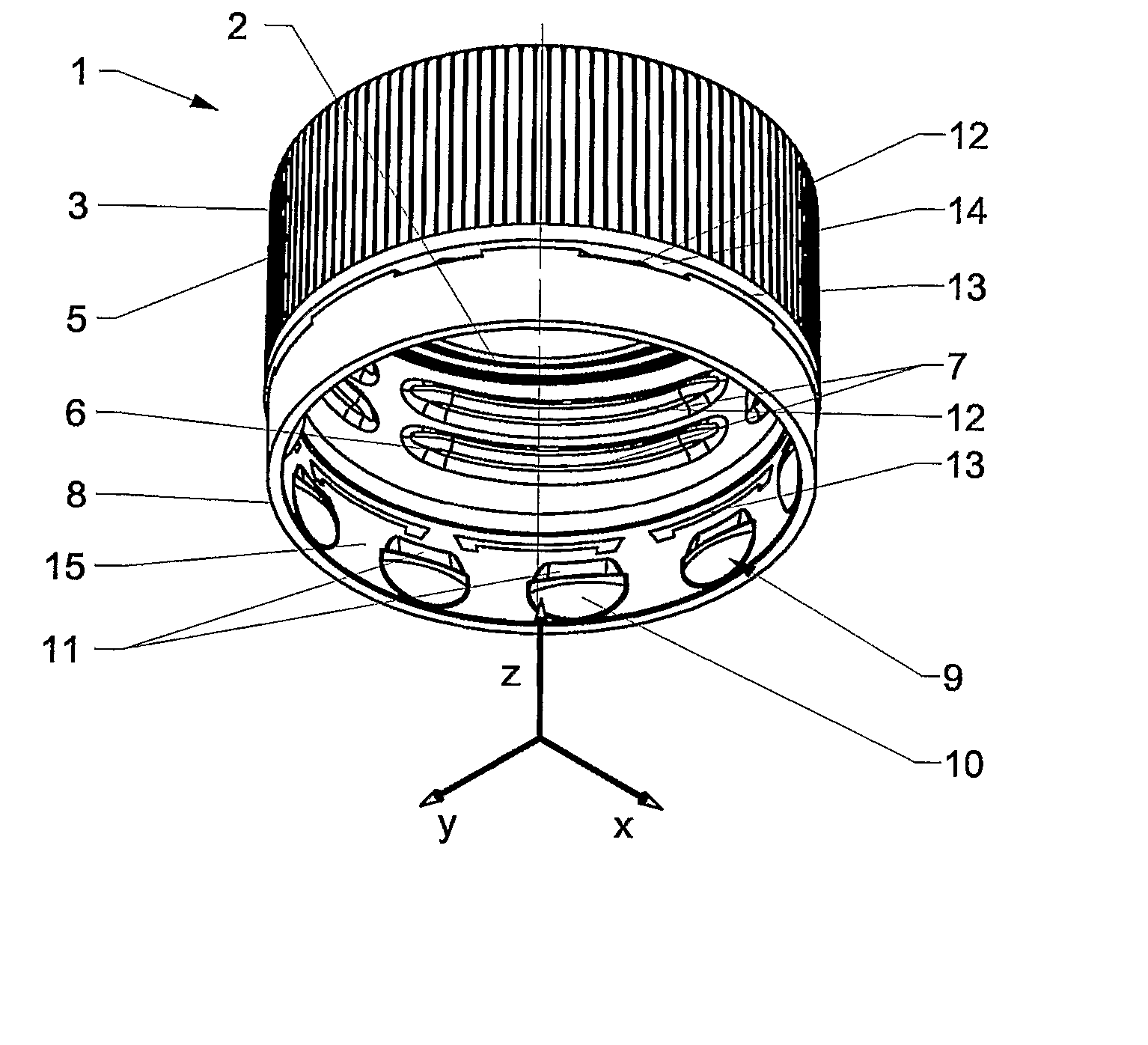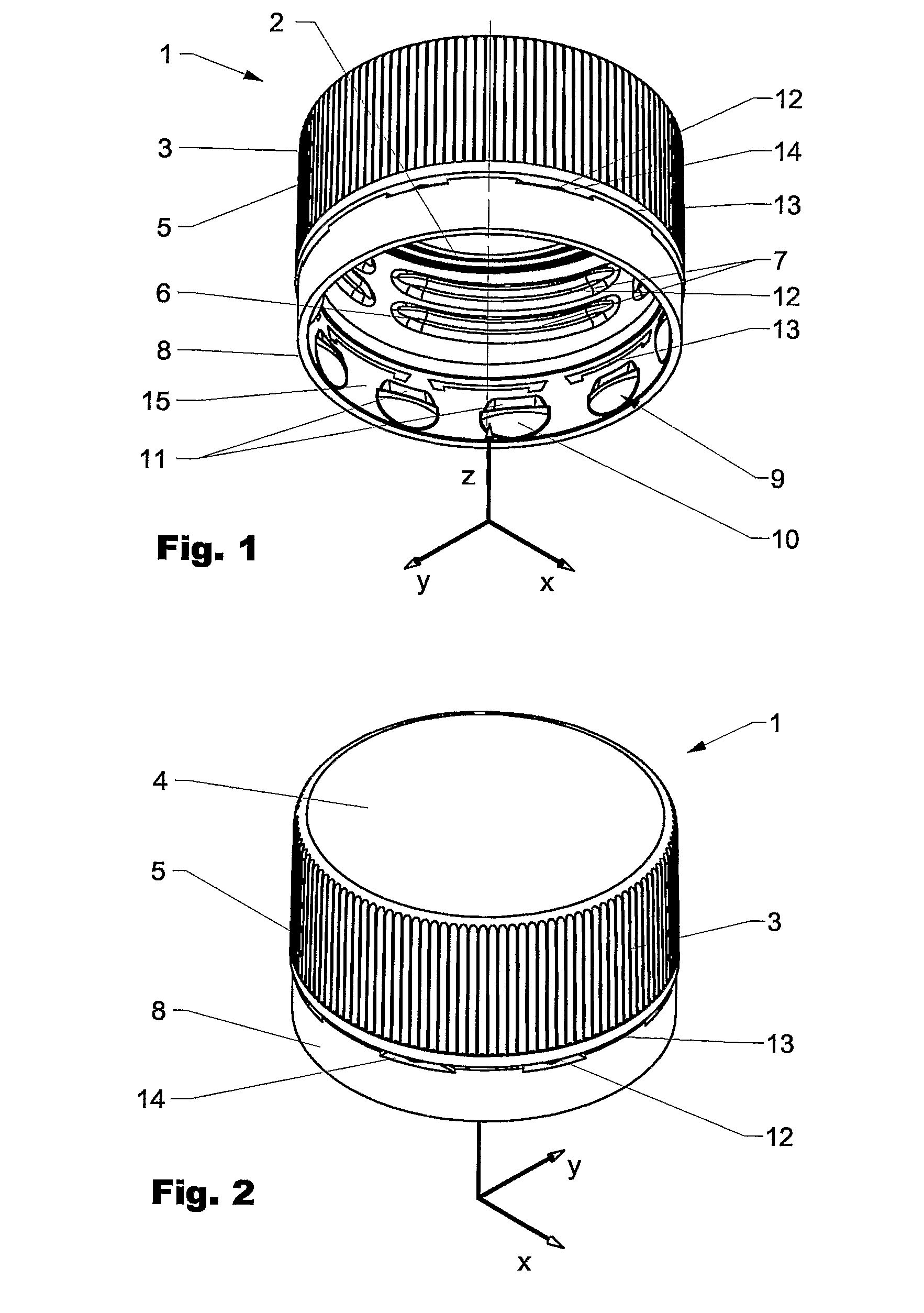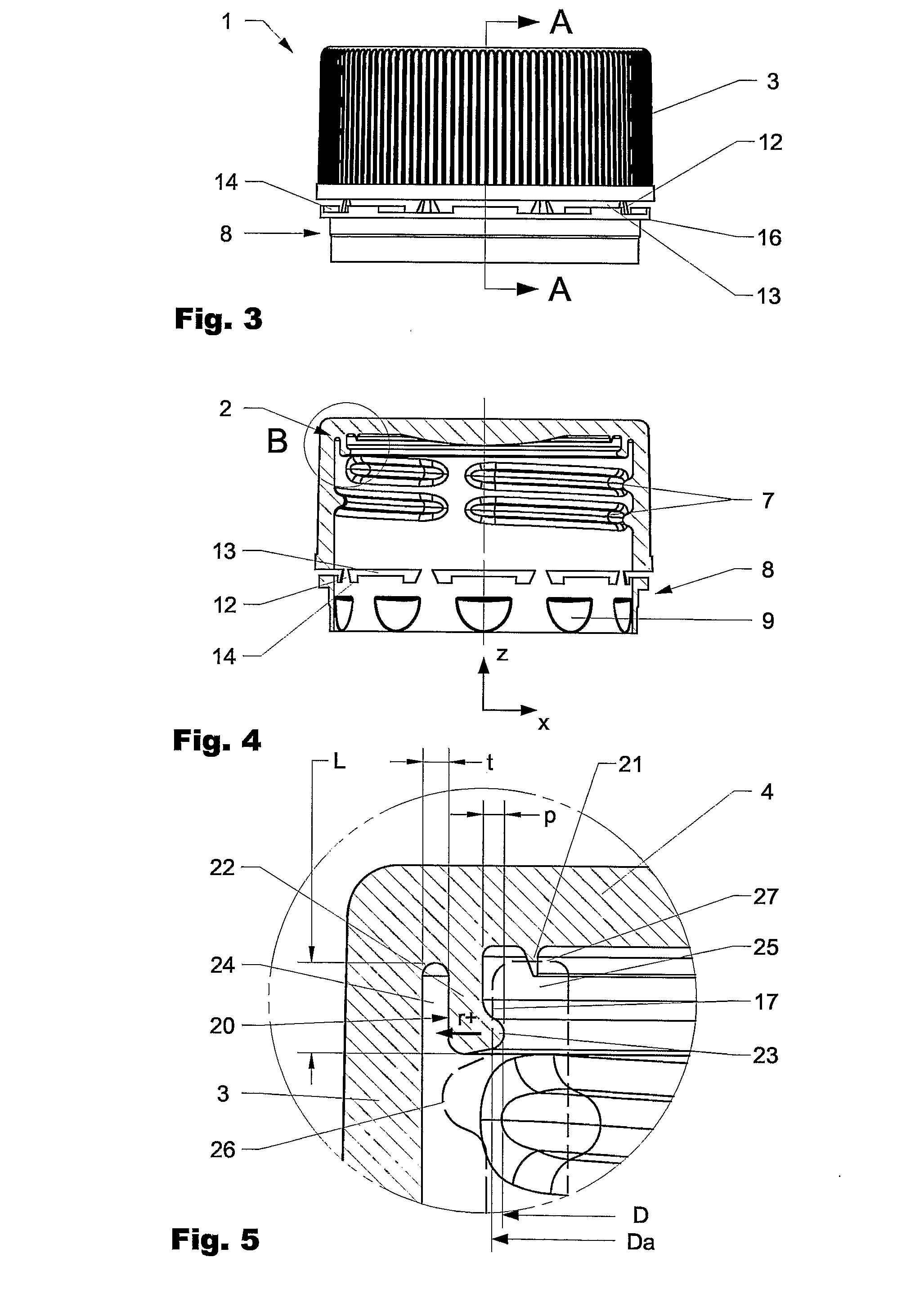Sealing Means for a Closure, Closure and Process
a technology of sealing means and closures, applied in the direction of closure lids, closure stoppers, caps, etc., can solve the problems of less hard and less durable materials, distorted sealing lip, and poor lateral adjustment of sealing lips, so as to achieve the effect of ensuring lateral/radial flexibility
- Summary
- Abstract
- Description
- Claims
- Application Information
AI Technical Summary
Benefits of technology
Problems solved by technology
Method used
Image
Examples
Embodiment Construction
[0042]FIG. 1 is showing a closure 1 comprising a sealing means 2 according to the present invention in an isometric side view from below and FIG. 2 the same closure 1 from a perspective side view from above. The closure 1 comprises an outer skirt 3 extending in general perpendicular from a disc-like top portion 4. The outer skirt 3 has on its outside vertically arranged knurls 5 which provide a better grip while operating the closure. On the inside the outer skirt 3 comprises a thread 6 consisting of thread segments 7. At its lower end the outer skirt is interconnected to a tamper band 8. The tamper band 8 of the displayed embodiment has in general the same outer diameter as the outer skirt 3 of the closure. On its inside the tamper band 8 comprises undercut segments 9 protruding radially inwardly and having a in general spherical lower part 10. During application of the closure onto the neck of a container (not visible) the spherical undercut segments support centering and alignmen...
PUM
 Login to View More
Login to View More Abstract
Description
Claims
Application Information
 Login to View More
Login to View More - R&D
- Intellectual Property
- Life Sciences
- Materials
- Tech Scout
- Unparalleled Data Quality
- Higher Quality Content
- 60% Fewer Hallucinations
Browse by: Latest US Patents, China's latest patents, Technical Efficacy Thesaurus, Application Domain, Technology Topic, Popular Technical Reports.
© 2025 PatSnap. All rights reserved.Legal|Privacy policy|Modern Slavery Act Transparency Statement|Sitemap|About US| Contact US: help@patsnap.com



